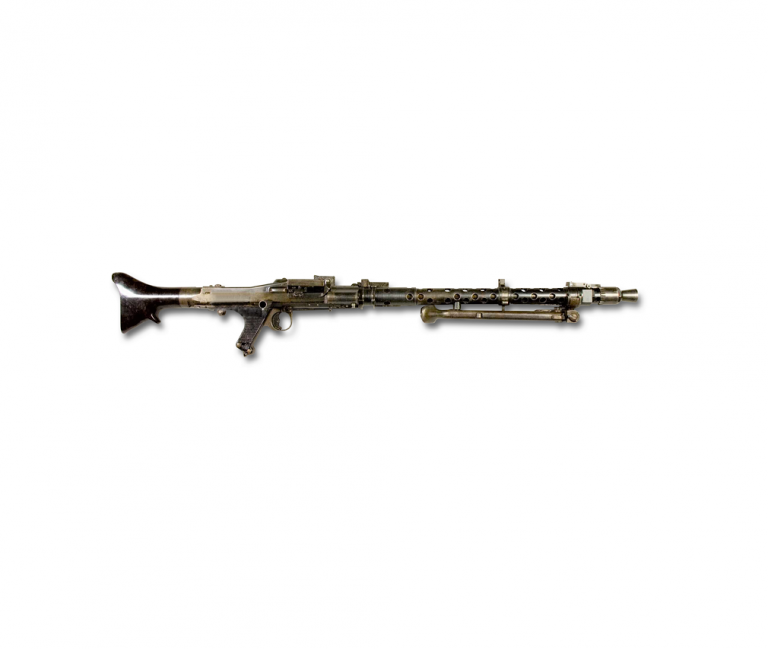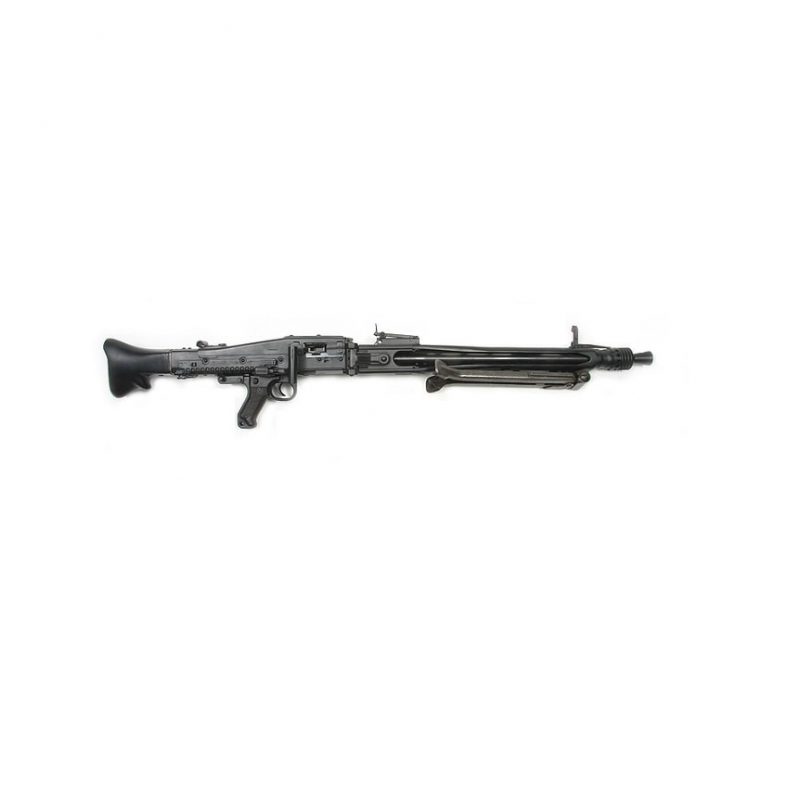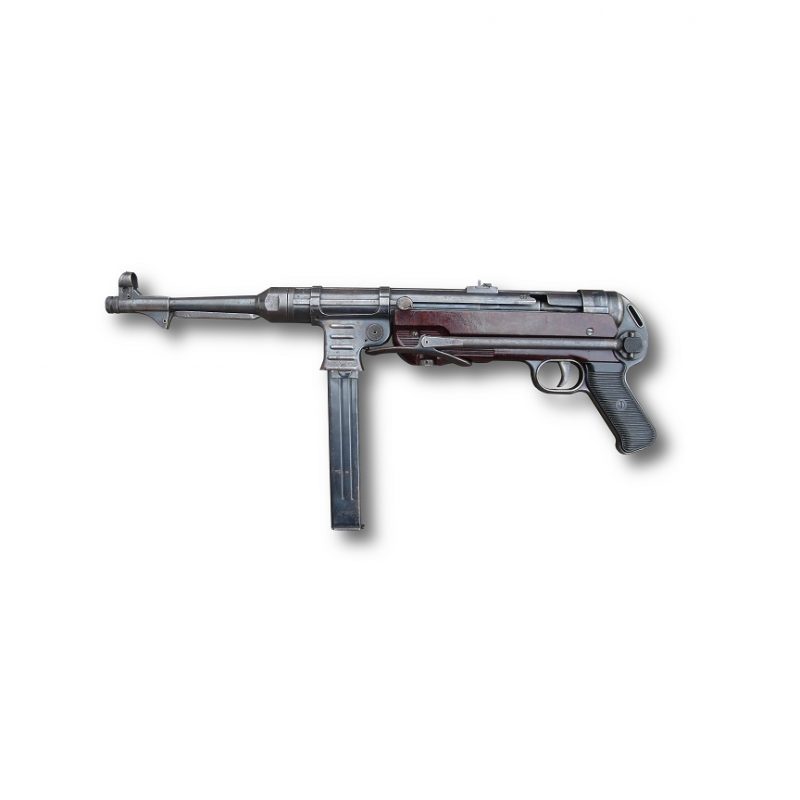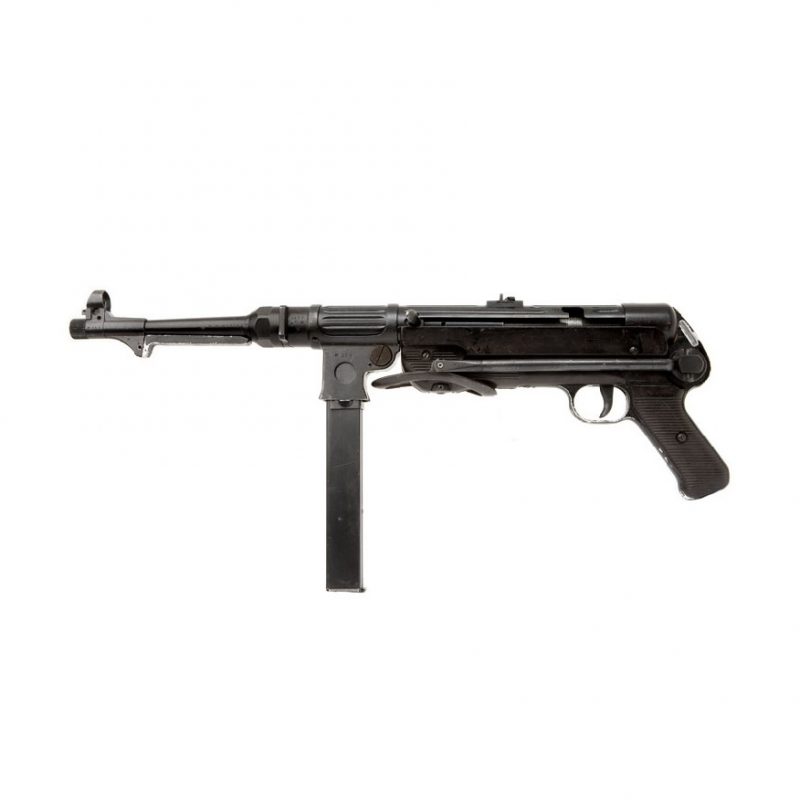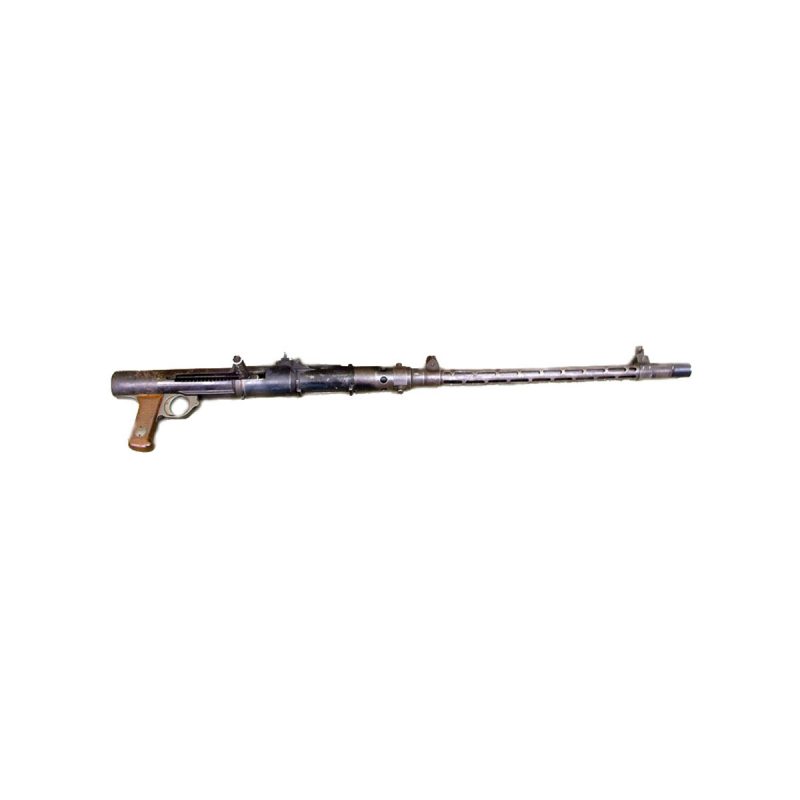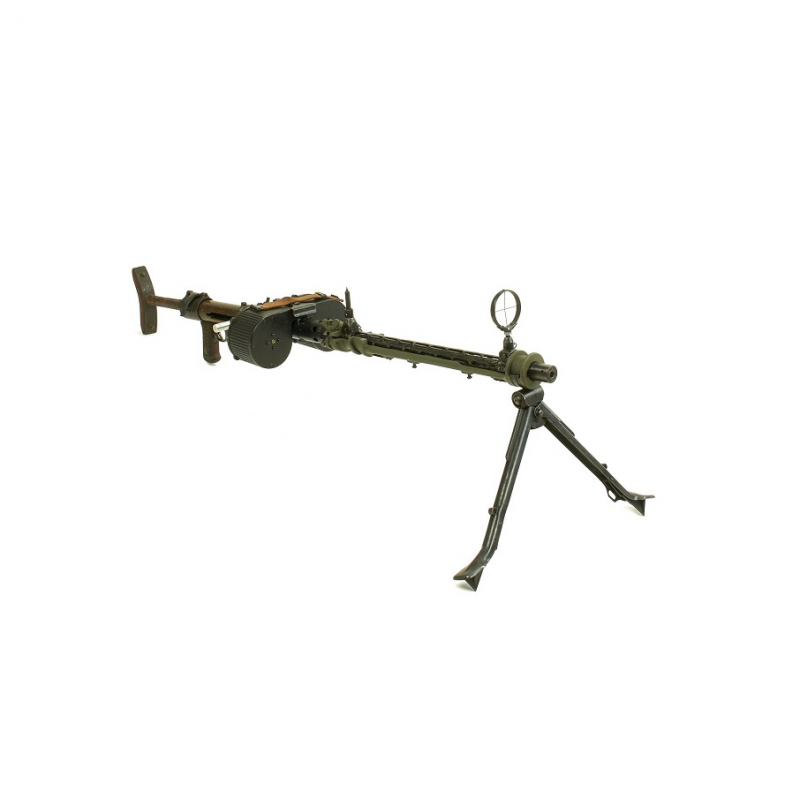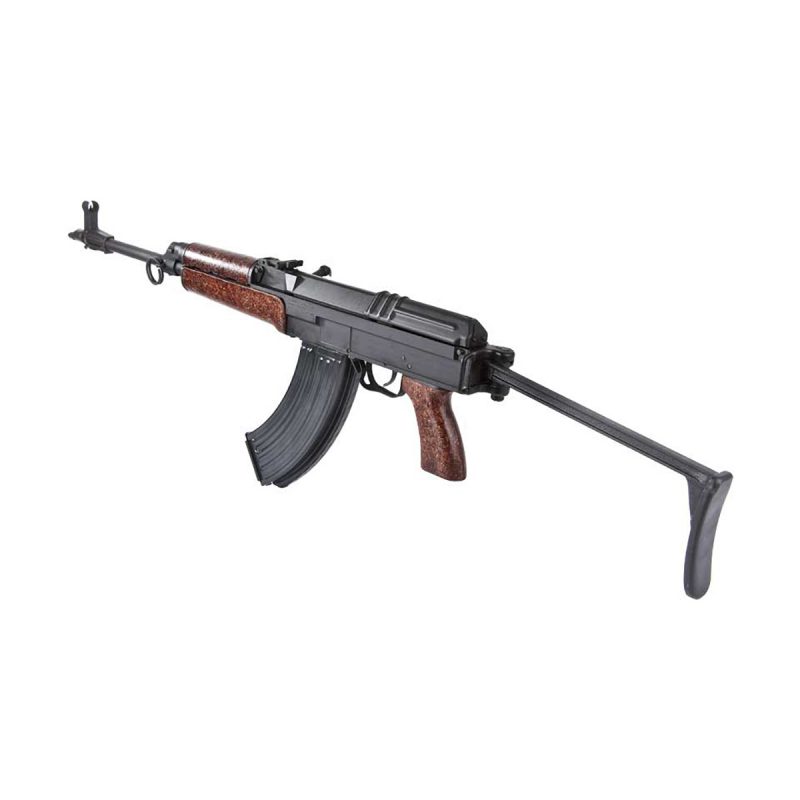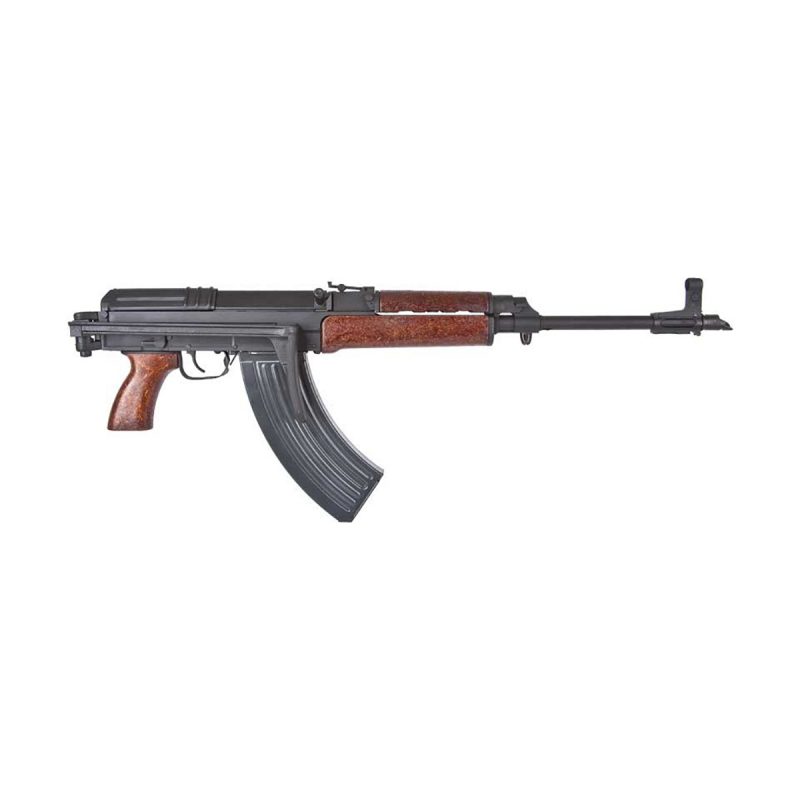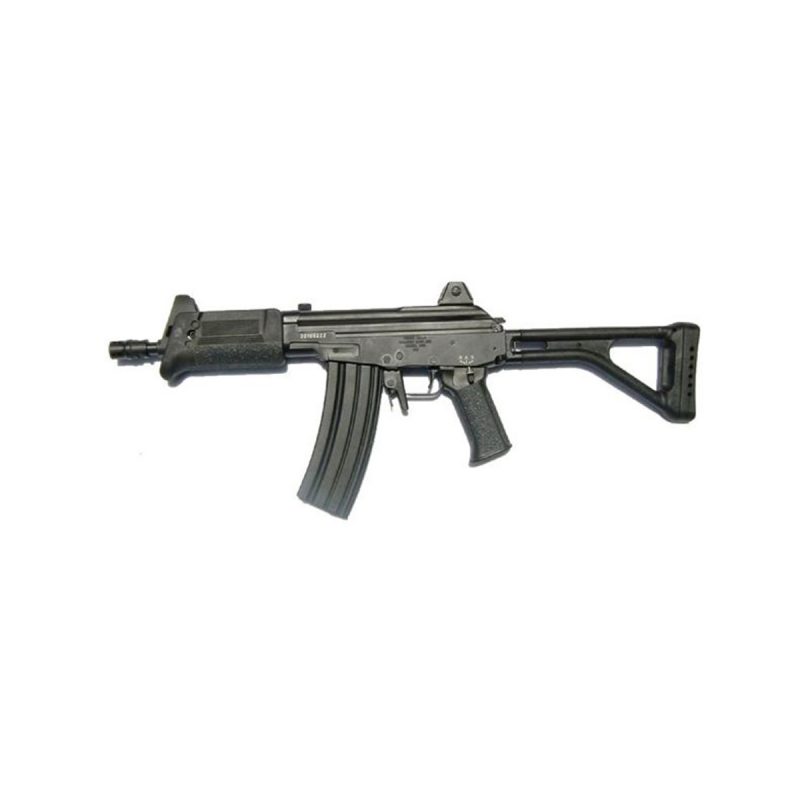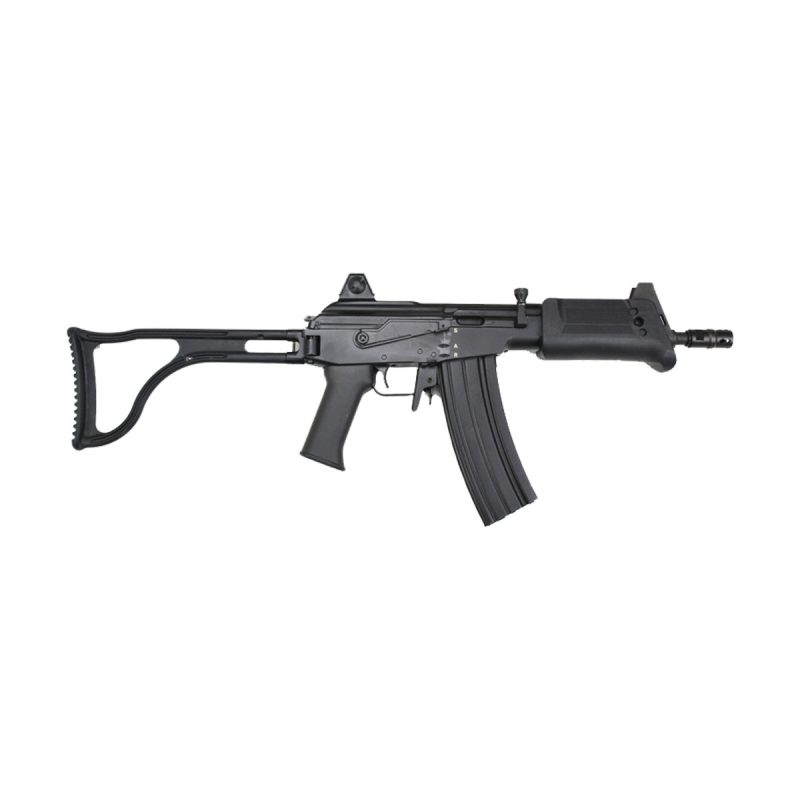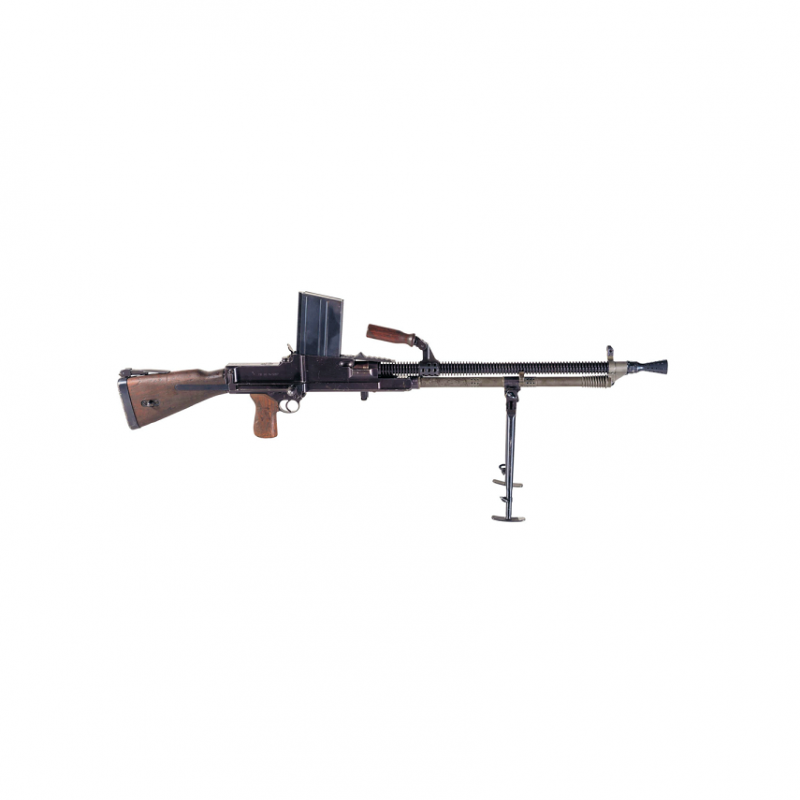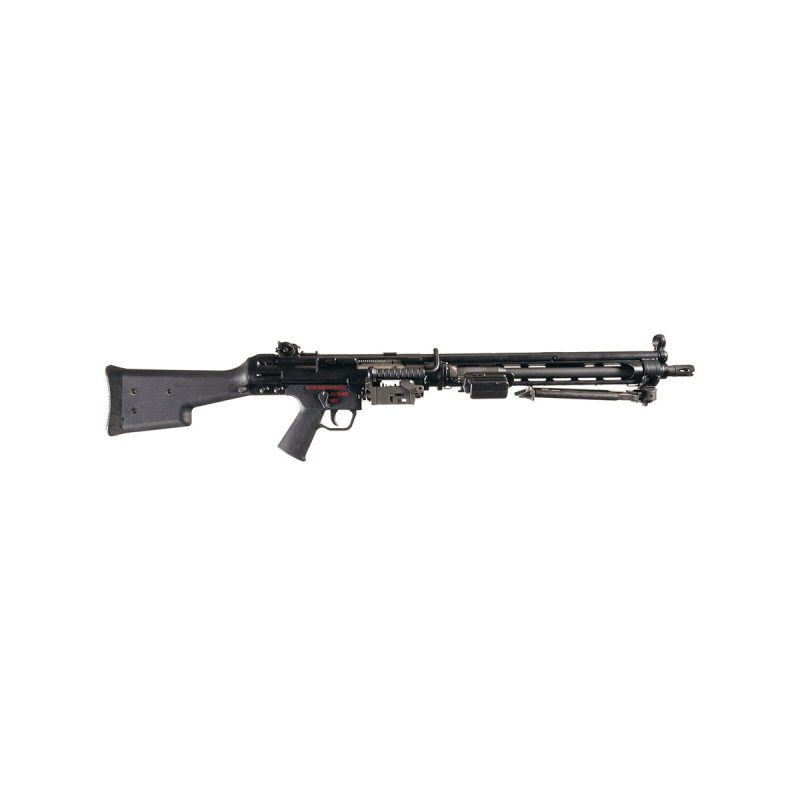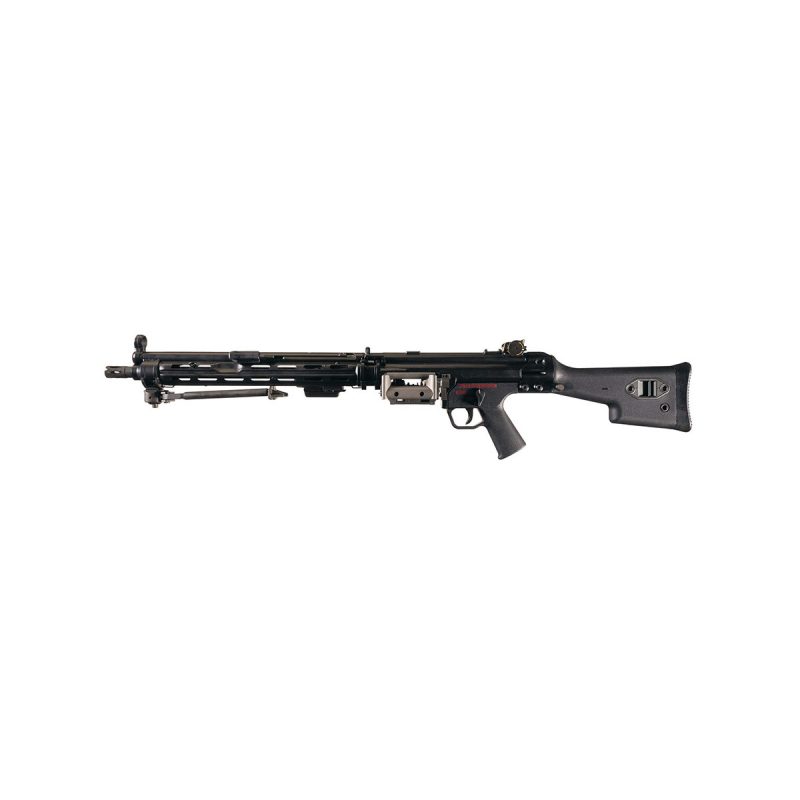Description
Previously reliant on bulky water-cooled machine guns such as the Maxim MG08, the inter-war German army was seeking a new air-cooled weapon that could fill a broad range of roles, from light/section support, to medium/tripod mounted sustained fire.
Aside from achieving a high rate of fire, it’s overall weight would be key to maintaining an ‘offensive’ ability, rather than being relegated to a mounted (bunker/trench) defensive role.
The German section light machine gun (LMG) of World War 1 was the MG08/15, which was basically a scaled down version of the MG08 and at a weight of 65 kg (143.3 lb) without water and ammunition, still required a multi-man crew to transport/operate.
Utilizing key features of other weapons (predominantly the MG 30), designer Heinrich Vollmer submitted his design for trials in 1934. At just over 12 kg (some 53 kg lighter than the MG 08/15), along with its cyclic rate of fire 900 rounds/minute, single man operation and the ease to change barrels, it was a complete success and immediately accepted for military service.
The MG 34 would prove key to the success of the early German Blitzkrieg (lighting) style of warfare, with the rapidly retreating Allies having nothing to match it with, except light machine guns such as the British Bren or Soviet DP, which were both limited by their magazine capacity.
It’s predominantly fired from its fixed bipod, however with the aid of a tripod and optical sight, it can quickly be transformed into filling the sustained/in-direct fire role. For anti-aircraft use, a large circular foresight can be fitted to a mount located halfway down the barrel sleeve.
The MG 34 was much prized by allied forces/partisan groups and captured examples were quickly put back into service against the Germans.
Over half a million of these machine guns were manufactured during the war and having seen service in so many theaters of operations, post war, amongst the chaos of the repatriations and clean-ups, weapons such as this readily found themselves in the hands of the criminal underworld and paramilitaries. Their presence in these organizations would last for decades and even today the odd example still appears in an obscure civil war or police seizure.
Designer: Heinrich Vollmer
Designed: 1934
Manufacturer: Rheinmetall-Borsig AG, Soemmerda, Mauserwerke AG, Steyr-Daimler-Puch AG, Waffenwerke Brünn
Produced: 1935-1945
